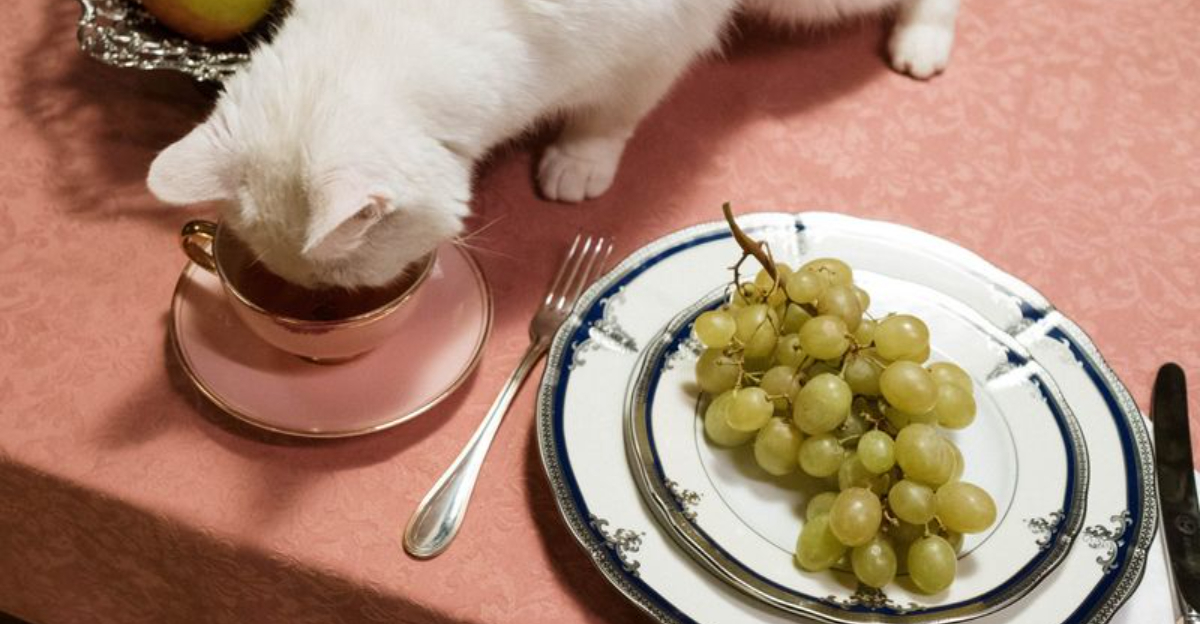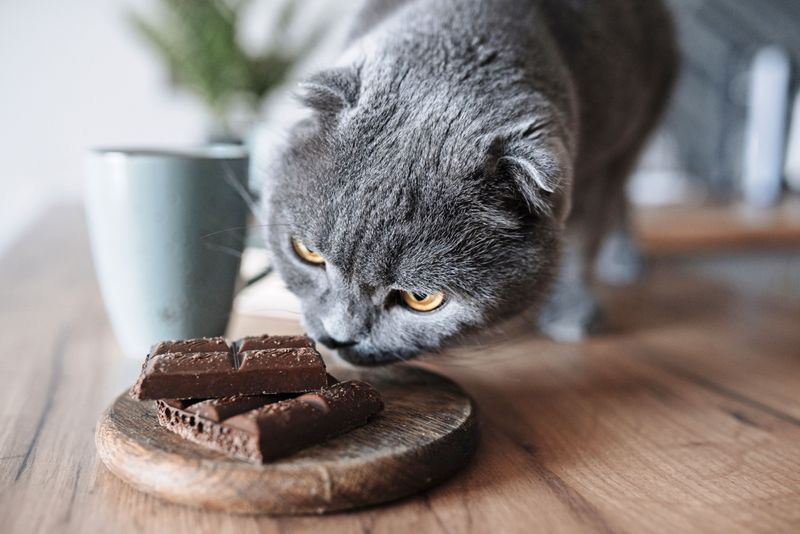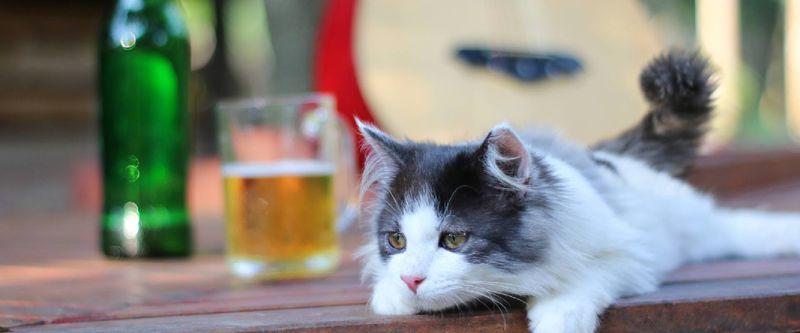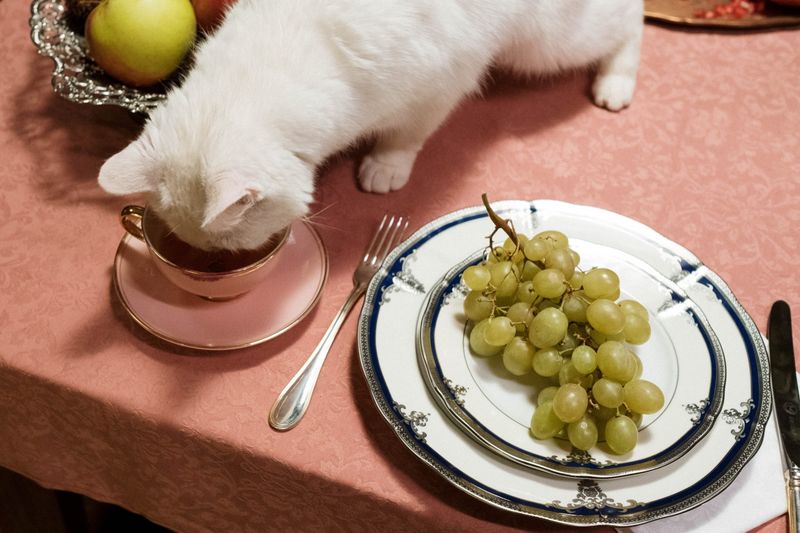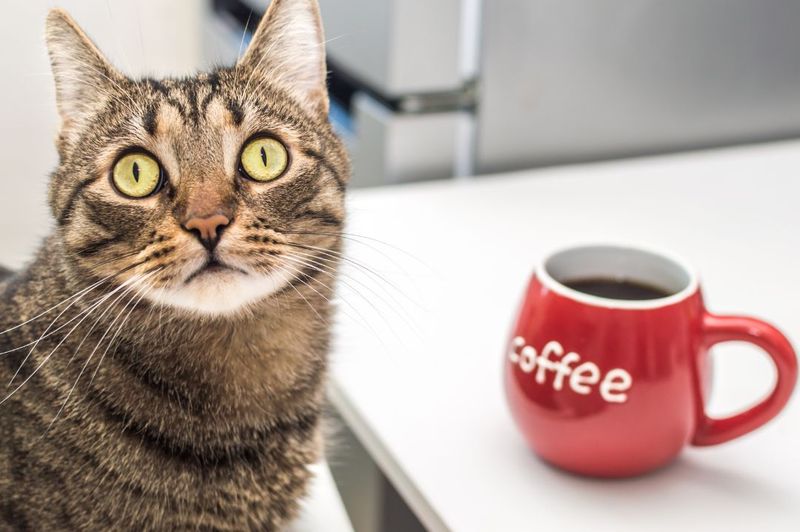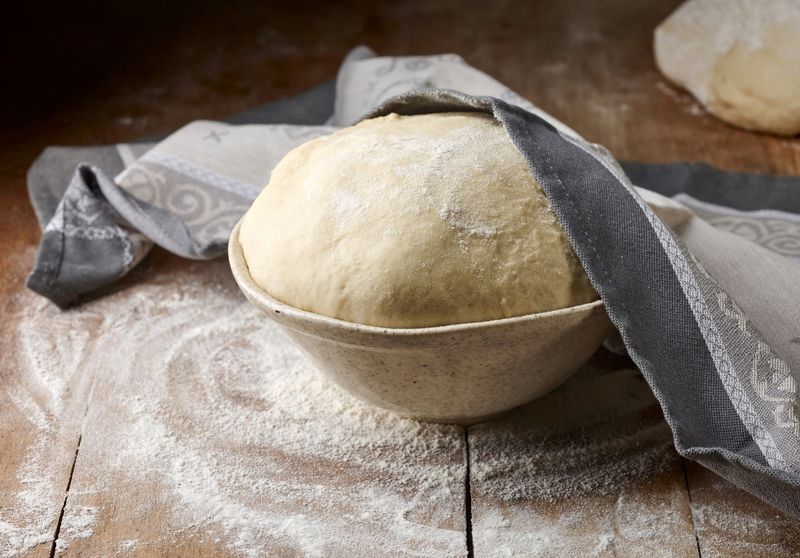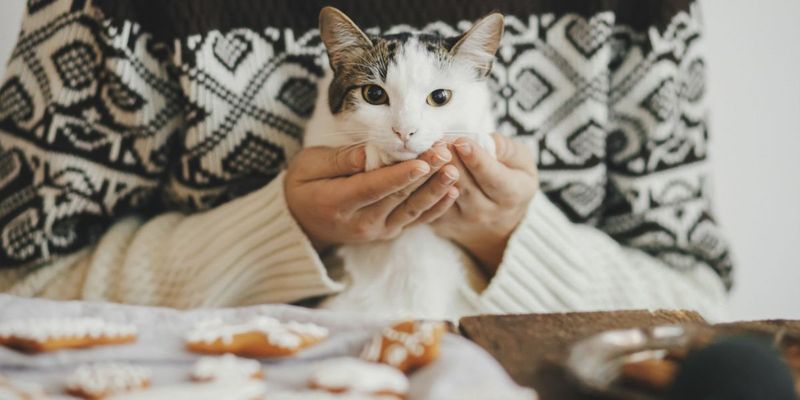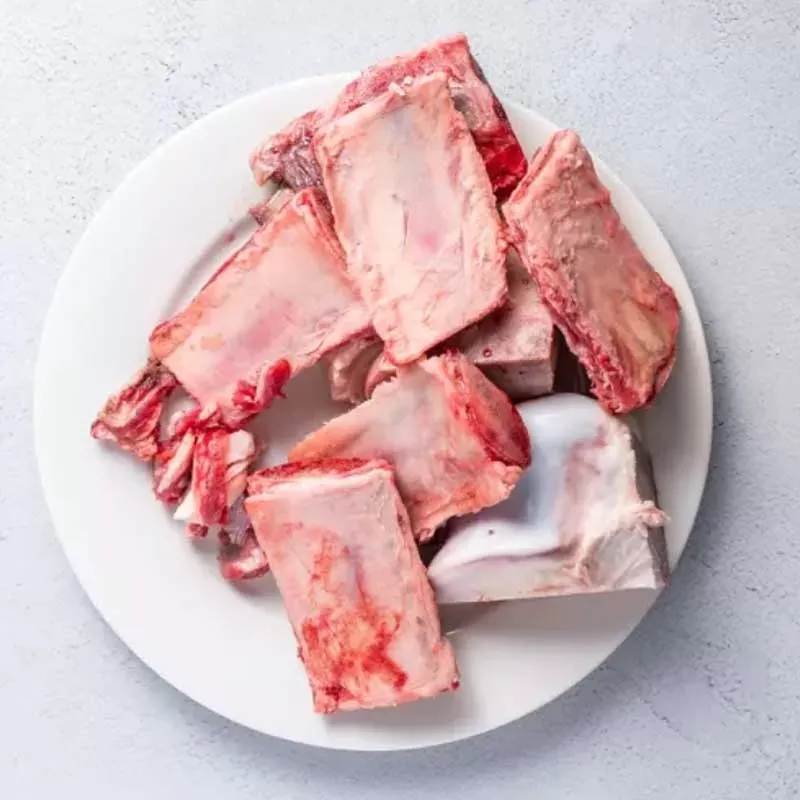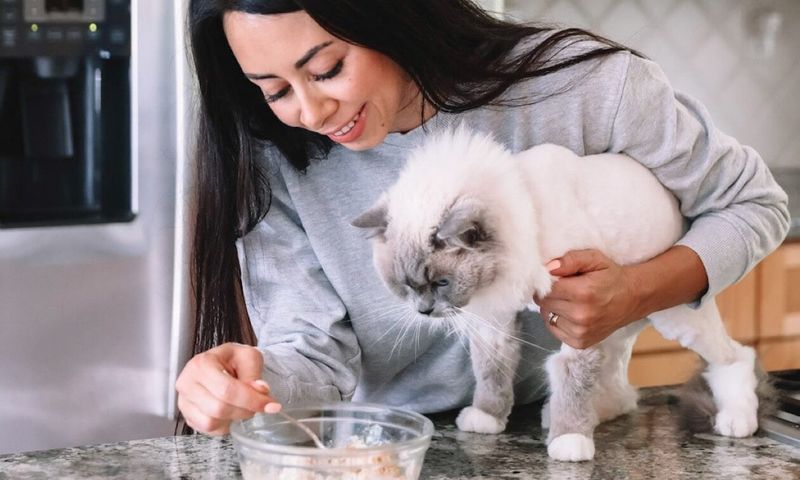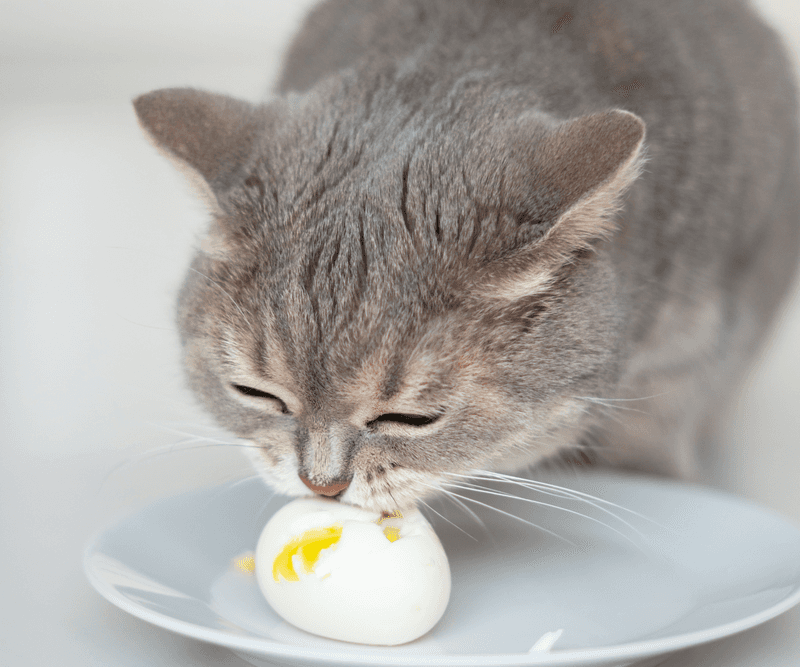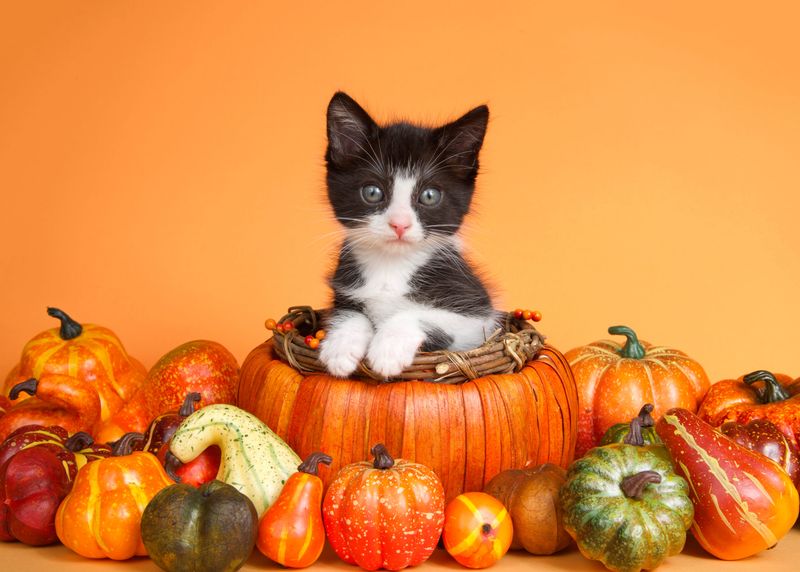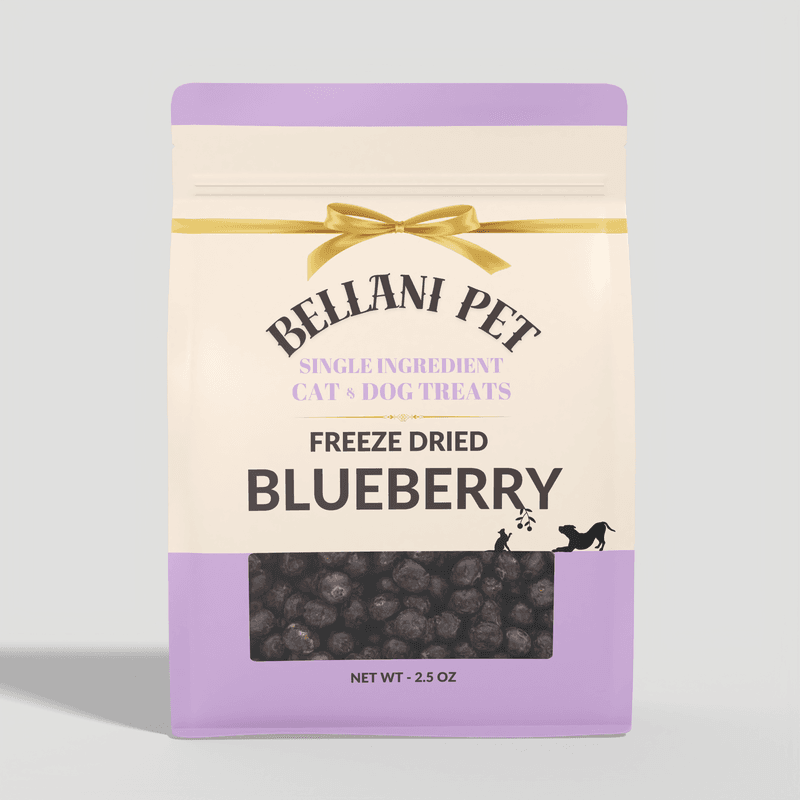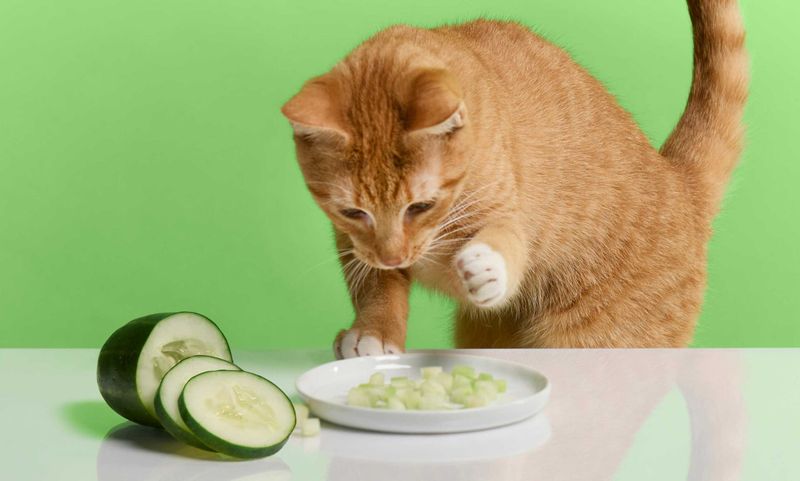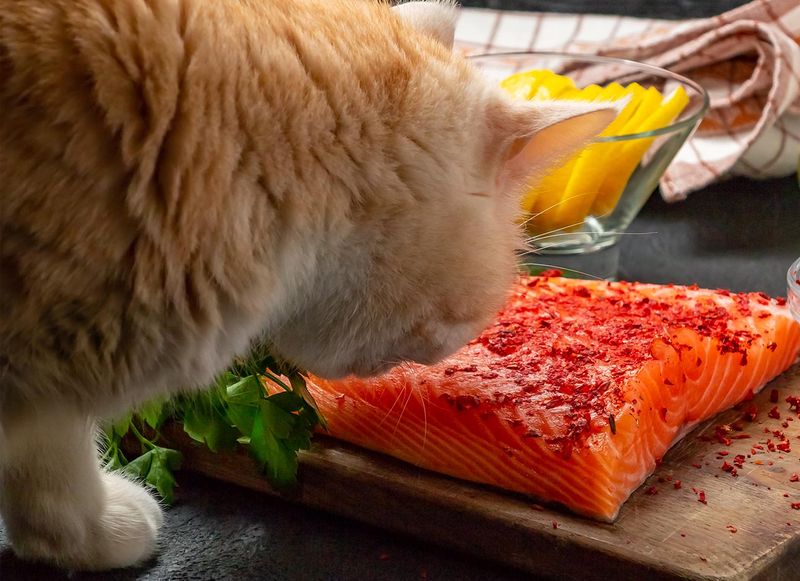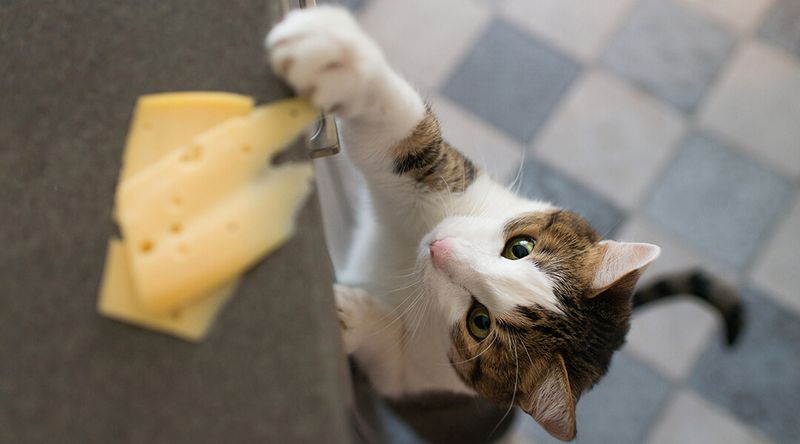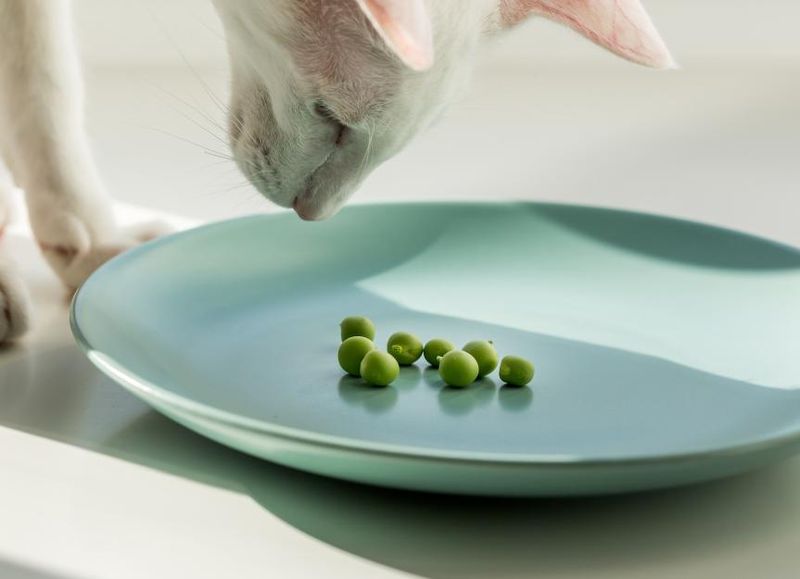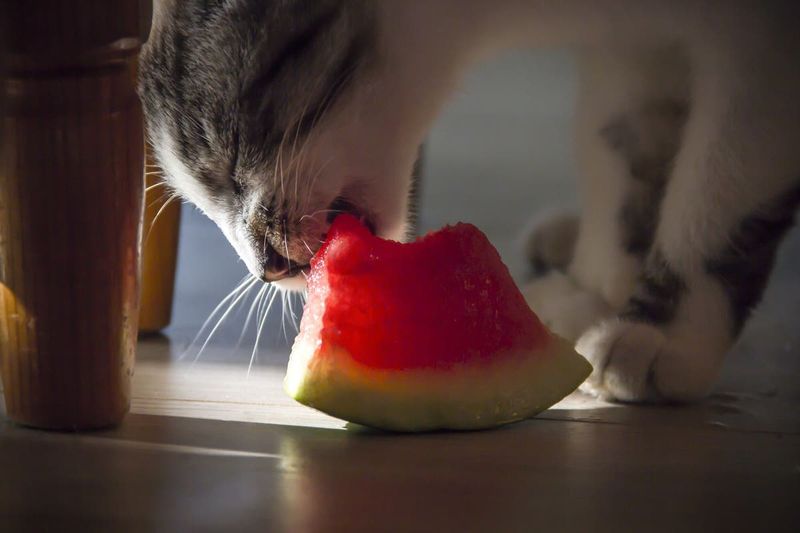📖 Table of Content:
If you’ve ever caught your cat eyeing your plate with suspiciously intense interest, you’re not alone. Those pleading eyes and twitching whiskers are hard to resist—especially when you’re enjoying something delicious. But before you slide a bite of your dinner across the table, it’s important to know that not everything on your plate is safe for feline consumption.
While cats may be curious and sometimes even enthusiastic about what we eat, their digestive systems are very different from ours. Certain human foods, even those that seem harmless, can be toxic to cats and lead to serious health issues. Ingredients like onions, chocolate, and alcohol can do far more damage than you’d expect, even in small amounts. On the other hand, some human foods are perfectly safe—and even beneficial—when served in moderation.
In this guide, we’ll break down 9 common foods that are dangerous for your cat, along with 9 you can offer guilt-free. Whether you’re looking to share a treat or avoid a trip to the vet, this list will help you make smarter, safer choices for your furry friend. Let’s dive into what belongs in the cat bowl—and what should stay on your plate.
1. Onions & Garlic
Hidden in many dishes, onions and garlic are silently dangerous for cats. These common kitchen staples can cause oxidative damage to red blood cells, leading to anemia over time. Even powdered forms, like onion or garlic powder, are just as toxic as raw ones. You might think a small amount won’t hurt, but there’s no safe dose. Cats are especially sensitive to all forms of alliums—raw, cooked, or dried. Symptoms may include weakness, vomiting, and breathing difficulties. If your cat accidentally ingests any, contact a vet immediately. It’s best to keep all seasoned or sauced foods far from curious paws.
2. Chocolate
Most pet owners know chocolate is off-limits, but not everyone understands just how dangerous it is for cats. This sweet treat contains theobromine and caffeine, both stimulants that cats cannot metabolize effectively. The darker the chocolate, the higher the risk. Even a nibble of a brownie or chocolate chip cookie can lead to tremors or seizures. Unlike dogs, cats don’t usually seek out sweets, but accidental exposure is still common. Symptoms can include restlessness, vomiting, high heart rate, and muscle tremors. Always store chocolate treats out of reach. When in doubt, chocolate and cats should never mix.
3. Alcohol
Believe it or not, even small traces of alcohol can have severe effects on a cat. From beer to cocktails to cooking wine, ethanol is incredibly toxic for felines. A few sips can cause disorientation, vomiting, difficulty breathing, or even coma. Cats are far smaller than humans and absorb alcohol much more quickly. Some curious cats may try to lick up spills or sample from an unattended glass. Don’t assume that cooking alcohol has evaporated enough to be harmless—it hasn’t. Never leave alcoholic beverages or foods containing alcohol where your cat can access them. It’s not funny or cute—it’s genuinely dangerous.
4. Grapes & Raisins
Few people realize how toxic grapes and raisins are to cats (and dogs, too). The exact cause isn’t fully understood, but even a small amount can lead to sudden kidney failure. Cats may not be as drawn to fruit as dogs are, but some will nibble out of curiosity. Vomiting, lethargy, and loss of appetite are early signs of poisoning. Kidney damage can occur within hours and become irreversible. If you suspect your cat ate even one grape or raisin, seek emergency veterinary care. Keep dried fruit snacks stored securely. It’s a good rule of thumb to avoid all fruit unless you’re sure it’s cat-safe.
5. Caffeinated Drinks
Caffeine is a stimulant that doesn’t mix well with feline biology. Found in coffee, tea, energy drinks, and even soda, it can quickly cause harm to your cat. Unlike us, cats don’t process caffeine efficiently, making it toxic even in small doses. Exposure can lead to restlessness, rapid breathing, heart palpitations, and tremors. Your cat may try to sneak a sip out of curiosity or lick up a spill. Unfortunately, just a small amount can send your kitty into a serious health crisis. Store all caffeinated drinks safely and clean spills immediately. Better safe than sorry when it comes to coffee and cats.
6. Raw Dough
Raw dough, especially bread or pizza dough, poses two major threats to cats. First, it expands in the warm environment of the stomach, potentially causing bloating and pain. Second, the fermenting yeast produces alcohol as a byproduct—dangerous for reasons already mentioned. A curious cat might be drawn to the smell, especially if you’re baking. The expanding dough can lead to a distended stomach or worse, gastric rupture. Alcohol toxicity from yeast fermentation adds a second layer of risk. If your cat consumes raw dough, treat it as a medical emergency. It’s best to avoid letting them near uncooked baking projects.
7. Xylitol
Xylitol is a sugar alternative commonly found in sugar-free gum, candies, baked goods, and even some peanut butters. While dogs are more commonly affected, xylitol is still harmful to cats and should always be avoided. It can trigger a dangerous insulin release, leading to hypoglycemia. Some brands of cat treats and dental chews may sneak in sweeteners, so read labels carefully. Symptoms of poisoning include weakness, seizures, and even liver failure. Even small doses can be deadly. When in doubt, go natural and sugar-free with no artificial substitutes. The safest treat is one that doesn’t come with a risk.
8. Bones & Fat Trimmings
It’s tempting to toss your cat a piece of meat with a bone or a little fatty trimming. But bones—especially cooked ones—can splinter and cause internal injury or choking. Fat trimmings, though flavorful, are difficult for cats to digest and can trigger pancreatitis. While cats are obligate carnivores, not all meat parts are safe for them. If you want to share meat, make sure it’s boneless, lean, and fully cooked. Never leave bones unattended, especially chicken or fish bones that break easily. Cats don’t need the extra fat or the risk. Think of safer, protein-rich alternatives instead.
9. Spicy Foods
Spicy food might be tasty for you, but it’s a no-go for your cat. Cats lack the taste receptors to enjoy spice, and their digestive systems can’t handle it well. Chili peppers, hot sauce, and spicy meats can irritate the stomach lining. Vomiting, diarrhea, and drooling are common symptoms. Capsaicin—the compound that gives food its heat—is the main culprit. While it won’t always be lethal, it causes unnecessary discomfort and distress. Avoid letting your cat sample anything with a kick. They won’t enjoy it, and their body definitely won’t thank you.
1. Cooked Chicken
Few cats can resist the smell of cooked chicken—and the good news is, you can let them enjoy it. High in lean protein, plain cooked chicken is one of the safest and most nutritious treats. Just make sure it’s unseasoned and fully cooked with no bones. Roasted, boiled, or poached are all good options. Skip the salt, oil, or garlic. Serve it in small, bite-sized pieces as a treat or food topper. Chicken is often used in commercial cat food, so it’s an easy go-to. Your cat will appreciate the meaty reward without the health risk.
2. Cooked Eggs
Eggs are another great source of protein and essential amino acids for cats. When cooked thoroughly—boiled or scrambled without seasoning—they make a safe and tasty treat. Raw eggs should always be avoided due to the risk of salmonella and biotin deficiency. Cats don’t need much, so a few small bites go a long way. You can mix it into their regular food or offer it as a standalone snack. The soft texture makes eggs easy to digest. It’s an excellent option for cats recovering from illness or with reduced appetites. As always, moderation is key.
3. Pumpkin
Surprisingly, pumpkin is a superfood for cats—when served plain and unseasoned. It’s rich in fiber, which helps regulate digestion and prevent both constipation and diarrhea. A spoonful added to their food can aid in hairball control, too. Look for plain canned pumpkin—not pumpkin pie filling, which contains sugar and spices. Even picky eaters often accept pumpkin when mixed with wet food. It’s gentle on the stomach and full of vitamins like A and C. Keep portions small—just a teaspoon or two per serving. It’s a natural digestive boost for your feline friend.
4. Blueberries
Not only are blueberries safe for cats, but they’re also full of antioxidants and fiber. While cats don’t crave fruit, some are curious enough to try these little berries. Serve them fresh and washed, maybe halved if they’re large. Frozen blueberries can be a fun summer treat, too. Cats with diabetes or obesity can benefit from low-calorie, low-carb treats like this. Some cat foods even include blueberries in their ingredient lists. Just a few berries at a time is plenty. They’re a paw-sitive alternative to processed snacks.
5. Cucumbers
Cats may be spooked by cucumbers in memes, but when it comes to eating them—they’re totally safe. Low in calories and packed with water, cucumbers are great for hydration. A few thin slices can be a crunchy, refreshing snack. Some cats even enjoy the texture and mild flavor. Make sure to wash and peel if not organic. Offer in small, raw pieces with no salt or dressing. It’s a healthy way to keep your cat cool on a hot day. And yes, you can skip the scare tactics.
6. Cooked Salmon
Cooked salmon is a feline favorite that’s also full of omega-3 fatty acids. These help promote healthy skin, a shiny coat, and strong joints. It should always be cooked and free of bones, spices, and oils. A simple steam or bake works perfectly. Raw salmon is risky due to parasites and bacteria. A small portion once a week is more than enough. Use it as a treat or to add variety to their regular meals. Your cat will love you for this one.
7. Cheese
Yes, cats and cheese can get along—just in moderation. Many cats are lactose-intolerant, but small amounts of hard cheese like cheddar are usually fine. It’s best used as a treat or pill-hiding helper. Cheese offers protein and calcium but also fat, so go easy. Soft cheeses are harder to digest and should be avoided. Keep portions tiny—think thumbnail-sized. If your cat shows any signs of stomach upset, stop offering it. For some cats, it’s the perfect bribe food.
8. Peas
Peas are often found in quality cat food, and they’re great for home feeding too. They provide fiber, plant-based protein, and essential vitamins like B1 and C. Cooked or thawed frozen peas (not canned) are the best choices. Cats usually enjoy the soft texture and sweet taste. Mash them or mix into wet food for easy feeding. Peas support digestive and immune health. Avoid giving them in pods, as they can be tough to chew. Simple, green, and good—peas are a feline-friendly veggie.
9. Melon
Though surprising, some cats go wild for melon. Cantaloupe and watermelon (seedless and rind-free) are safe and hydrating. The sweet scent may mimic amino acids in meat, explaining their appeal. Serve chilled cubes as an occasional treat. Never include seeds or skin, as they can cause choking or digestion issues. This treat is best in hot weather or for cats who love variety. Don’t overdo it—just a few bites are enough. It’s fruit, but fun for felines!
